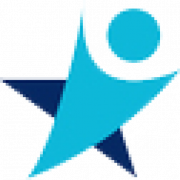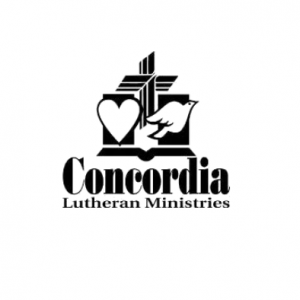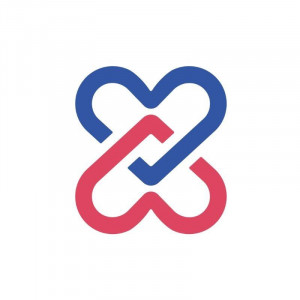Hours: 7a-3:30p, 7a-7:30p, 3p-11:30p, 7p-7:30a, 11p-7:30a
Responsible for providing direct care on 7 Tower, which is a Medical/ Surgical/Cardiovascular Telemetry unit that provides acute nursing care to patients requiring telemetry monitoring. The Registered Nurse's responsibilities include but are not limited to utilization of the nursing process in the provision of care, excellent customer service skills and communication skills, flexibility, quality improvement activities and professional growth for the following patient population:
1. Post-operative cardiothoracic surgical patients that are hemodynamically stable
2. Surgical patients requiring post-operative cardiac monitoring
3. Patients with coronary artery disease awaiting open heart surgery.
4. Patients with angina pectoris with and without cardiac interventions.
5. Patients with diagnosis of heart failure requiring cardiac monitoring.
6. Neuro medical requiring cardiac monitoring.
7. Medical surgical overflow not requiring cardiac monitoring.
8. Patients with concurrent mental health needs. The Registered Nurse will support the patients and families physical and emotional health.
Graduate of a Registered Nurse Program
Bachelor Degree in Nursing.
Registration/Certification/Licensure:
Current PA RN license, Healthcare Provider CPR, ACLS completed within one year of hire/transfer.
Clinical rotation through educational program.
Clinical experience evident within the past 3 years or completion of refresher course within the last year.
Comprehensive Crisis Management per policy.
The following frequency definitions apply to all Physical Requirements unless otherwise noted:
Occasional:(0-1/3 of day , 0 - 2.5 hrs/day, 1 - 4 reps/hr)
Frequent:(1/3 -2/3 of day , 2.5 - 5.5 hrs/day, 5 -24 reps/hr)
Constant: (> 2/3rd of day , > 5.5 hrs/day, > 24 reps/hr)
NOTE: An asterisk (*) indicates that the item is an essential function.
Standing*- Remaining on one's feet in an upright position remaining stationary - FREQUENT
Walking*- Remaining upright on one's feet, and moving about - CONSTANT
Sitting*- Body remains in a seated position - OCCASIONAL
Stooping*- To bend the body downward and forward by bending the spine at the waist - OCCASIONAL
Bending*- To flex the upper body forward - FREQUENT
Twisting*- To rotate the upper body forward - FREQUENT
Climbing*- To move the body in any direction on equipment or structures that do not include stairs or ladders - OCCASIONAL
Ladders- To ascend and descend ladders - N/A
Stairs*- To ascend and descend stairs - OCCASIONAL
Kneeling*- To move the body downwards and come to rest on both hands and both knees - OCCASIONAL
Squatting*- To move the body downwards by bending both knees - OCCASIONAL
Crouching*- To bend the body forward and downward by bending the spine and the legs - OCCASIONAL
Crawling*- To move the body forward or backwards on hands and knees - OCCASIONAL
Reaching Horizontal*- To extend the arms and hands outward, remaining under shoulder height - CONSTANT
Reaching Overhead*- To extend the arms and hands up and out over shoulder height - FREQUENT
Grasping*- Using functional gripping of the hand to handle an object - FREQUENT
Finger Manipulation*- To manipulate objects with the use of fingers - CONSTANT
Seeing*- Using visual feedback to accomplish a task or activity - CONSTANT
Hearing*- Using sound feedback to accomplish a task or activity - CONSTANT
Repetitive Upper Extremity Use*- Using the arms and/or hands continuously or more than 2/3 of the total time - CONSTANT
Repetitive Lower Extremity Use*- Using the legs and/or feet continuously or more than 2/3 of the total time - N/A
Pushing* - To exert a force upon an object in order to move it in a certain direction Pushing refers to moving an object away from the person
Pulling * - To exert a force upon an object in order to move it in a certain direction Pulling refers to moving an object towards the person
Lift * - Waist to shoulder
Lift * - Shoulder to overhead
Carrying* - To transport an object or article using the arms or hands (> 10 feet)
Working in cramped quarters- OCCASIONAL
Constant interruptions * - FREQUENT
Working with hands in water *- FREQUENT
Working on ladders/scaffolding- N/A
Exposure to vibration- N/A
Exposure to noise (constant)- OCCASIONAL
Exposure to electrical energy (outlets, etc)- N/A
Exposure to temperature changes (heat, cold, humidity), that require special clothing- N/A
Exposure to slippery walking surfaces- OCCASIONAL
Exposure to solvents, grease, oils- N/A
Exposure to radiant energy, ie computer terminal (more than 4 hours per shift) *- OCCASIONAL
Working with bloodborne pathogens * - OCCASIONAL
Cardiovascular Energy Requirements - Physical Demand
|
Physical Demand
|
Met Level
|
Examples of similar activity intensity
|
| Sedentary to Light |
0 - 3.5 |
Light house cleaning, washing dishes, serving food, food shopping, sitting, standing, computer work. |
| Medium |
3.6 - 6.3 |
House work (mopping, scrubbing), health club exercising, treadmill work, stretching, yoga, walk/run-play with children, aerobic class, dancing, carrying bucket/wood, auto body repair, shoveling snow, golf (carrying clubs). |
| Heavy to Very Heavy |
> 6.4 |
Calisthenics (push up, pull up, sit up, vigorous effort), carrying groceries upstairs, shoveling coal, bailing hay, fire fighting, sawing by hand, splitting wood. |
As relates to this position:
Sedentary to Light * - CONSTANT
Heavy to Very Heavy - N/A









